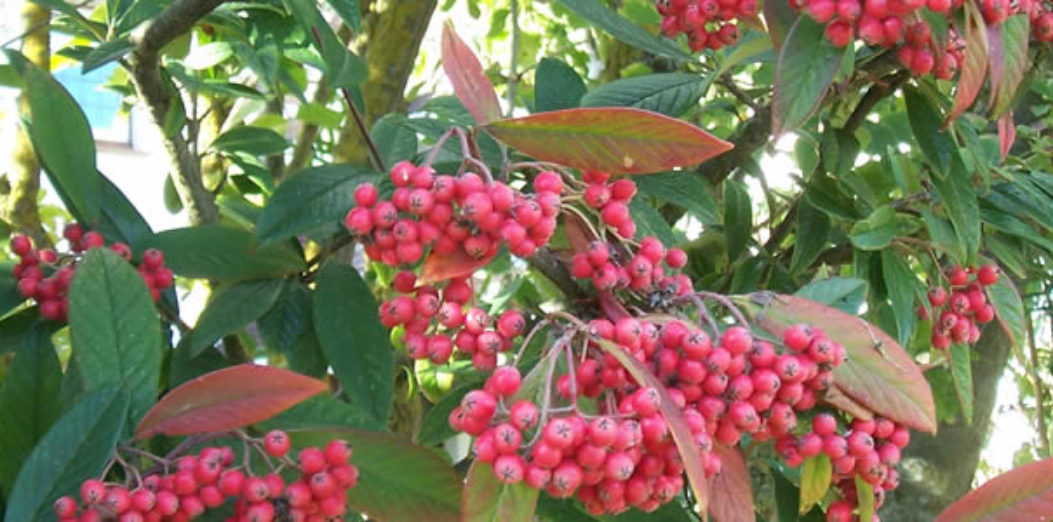Plant Focus: Cotoneaster ‘Cornubia’

Cotoneasters are generally very easy to grow – and fast growing – evergreen and deciduous shrubs, with white spring flowers, followed by (usually) red berries in the winter. The various types have a mulititude of uses – as border shrubs, for hedging, and some forms are often used as ground cover, especially on banks and in supermarket car parks. Perhaps as result of this, they seem to have gained the reputation for being rather boring, lax plants. This is a shame because there are some lovely and really useful Cotoneasters readily available, including my favourite: Cotoneaster ‘Cornubia’.
Why I like it
Cotoneaster ‘Cornubia’ is a large evergreen or semi-evergreen shrub, with long, dark green leaves. It has a mass of white flowers in late spring and early summer, which are very attractive to bees, and a wonderful display of large bright red berries in the winter. The birds in my garden seem to prefer Pyracantha, Rowan and other berries, so my Cotoneaster manages to keep its berries until we have a spell of really cold weather in January and February – then flocks of hungry Fieldfares and Redwings devour the mature berries in no time.
Looking after Cotoneaster ‘Cornubia’
It is fully hardy, and will cope with any aspect, or any half decent soil, and is happy in sun or partial shade. As it is fast growing, it does need some light pruning in late winter / early spring to keep it tidy and in bounds. Left unpruned it can reach 6m high and more. It can suffer from the odd aphid attack, but compared to the vast majority of plants, it is remarkably trouble free.
Where to use it
It is an incredibly versatile plant – often seen as a specimen shrub in the middle of the border (where admittedly it does need to be given a bit of space). It can also be trained on a single stem to form a very nice small evergreen tree. But I think it comes into its own when grown against a fence as an evergreen wall shrub, where it will just need a few wires or anchor points. Grown in this way, it doesn’t need to be fancily pruned – just trimmed to keep it tidy, but it can also be fanned or trained as an espalier. It looks really stunning when grown like this on trellis or lattice, where it can make a very attractive screen (eg in front of a shed or vegetable plot), without taking up too much horizontal space.
An Alternative
And if this isn’t enough, there are also similar Cotoneasters with yellow berries, such as ‘Rothschildianus’ and ‘Exburyensis’, although these don’t have quite the same vigour as ‘Cornubia’.
All in all a very attractive plant that deserves to be more widely planted.
Image credit: Leonora (Ellie) Enking